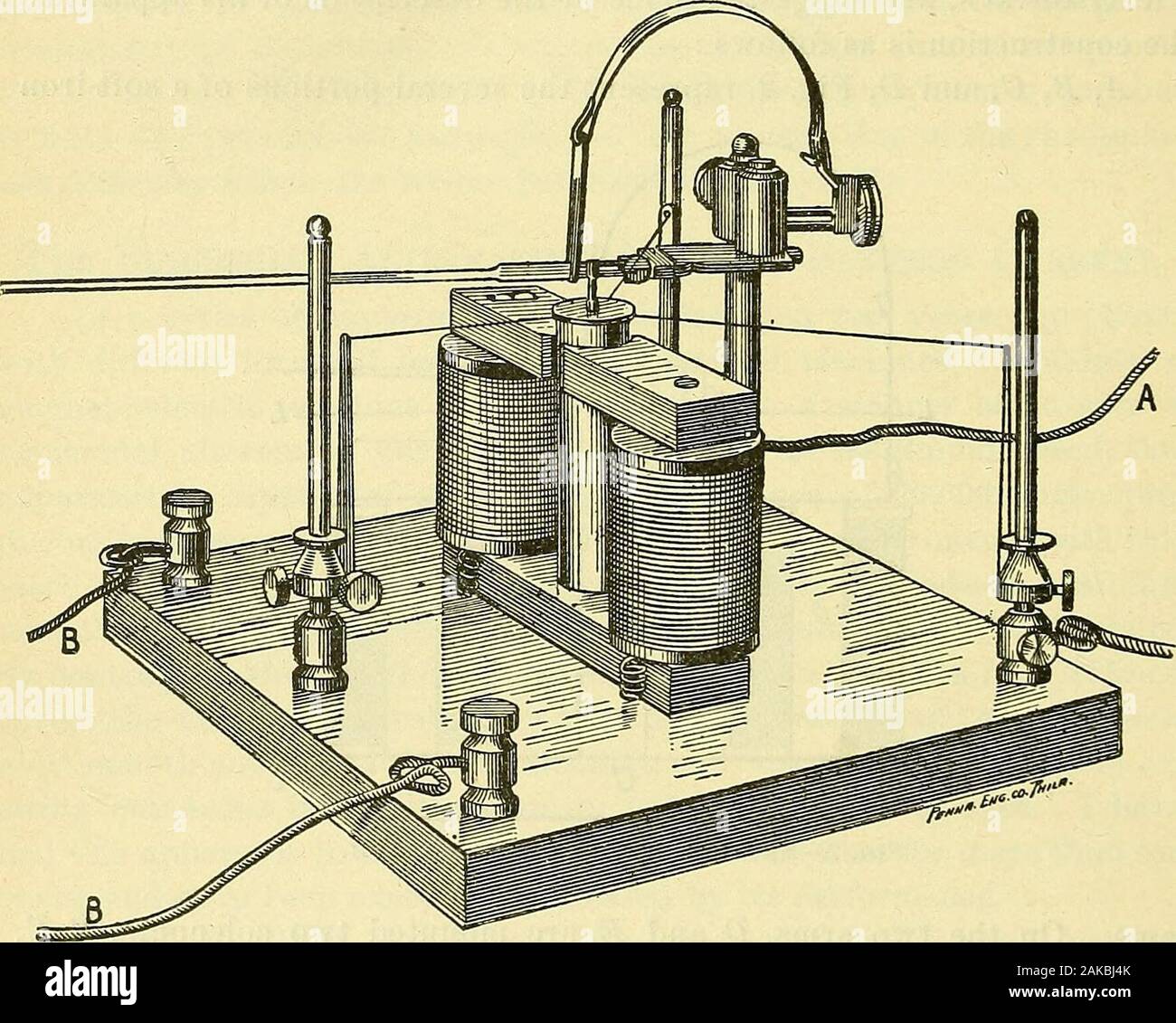An international system of electro-therapeutics : for students, general practitioners, and specialists . h the terminals, L L. When a current is passing through the coils E E, thus producinga magnetic field about the solenoid F, a current flowing in one directionthrough F will cause it to be lifted up, while a current passing in theopposite direction will cause it to drop below the level to which it is heldby the spring /. The writing-arm G is attached at one end to the brass G-80 KELLOGG. post Hj the other end being free. A small standard connects it with thesolenoid F, which, acting upon the

Image details
Contributor:
The Reading Room / Alamy Stock PhotoImage ID:
2AKBJ4KFile size:
7.1 MB (441.9 KB Compressed download)Releases:
Model - no | Property - noDo I need a release?Dimensions:
1766 x 1415 px | 29.9 x 24 cm | 11.8 x 9.4 inches | 150dpiMore information:
This image is a public domain image, which means either that copyright has expired in the image or the copyright holder has waived their copyright. Alamy charges you a fee for access to the high resolution copy of the image.
This image could have imperfections as it’s either historical or reportage.
An international system of electro-therapeutics : for students, general practitioners, and specialists . h the terminals, L L. When a current is passing through the coils E E, thus producinga magnetic field about the solenoid F, a current flowing in one directionthrough F will cause it to be lifted up, while a current passing in theopposite direction will cause it to drop below the level to which it is heldby the spring /. The writing-arm G is attached at one end to the brass G-80 KELLOGG. post Hj the other end being free. A small standard connects it with thesolenoid F, which, acting upon the short arm of the lever, produces, even with a very slight movement of the solenoid, a considerable move-ment of the long bamboo lever, the free end of which rests against thesmoked surface of a revolving cylinder. By means of this device the most delicate variations in an electriccurrent may be instantly recognized and recorded by means of a kymo-graphion, in the same way in which tracings are taken from a recordingtambour (Fig. 3). By means of this instrument I have taken a large number of tracings. FiQ. 3.—The Electroqbaph. (Kellogg.) of different forms of electric currents. Being especially interested inthe sinusoidal current, I naturally first gave my attention to this, andobtained the tracing shown in Plate I, Fig. 1. Tlie physiological effects produced by the sinusoidal current whichare most characteristic of it are (1) its painlessness and (2) its great pene-trating power. DArsonval has shown that the intensity of the motoror sensory reaction produced by a given current is proportional to thevariation of potential at the point excited. The constant alternation ofthe current prevents polarization of the tissues acted upon, and hencemaintains the maximum exciting effect. That important physiological significance must attach to the mode METHODS OF APOSTOLl AND OTHERS. G-81 of variation in potential as well as to the amount of variation is clearlyevidenced by the differenc